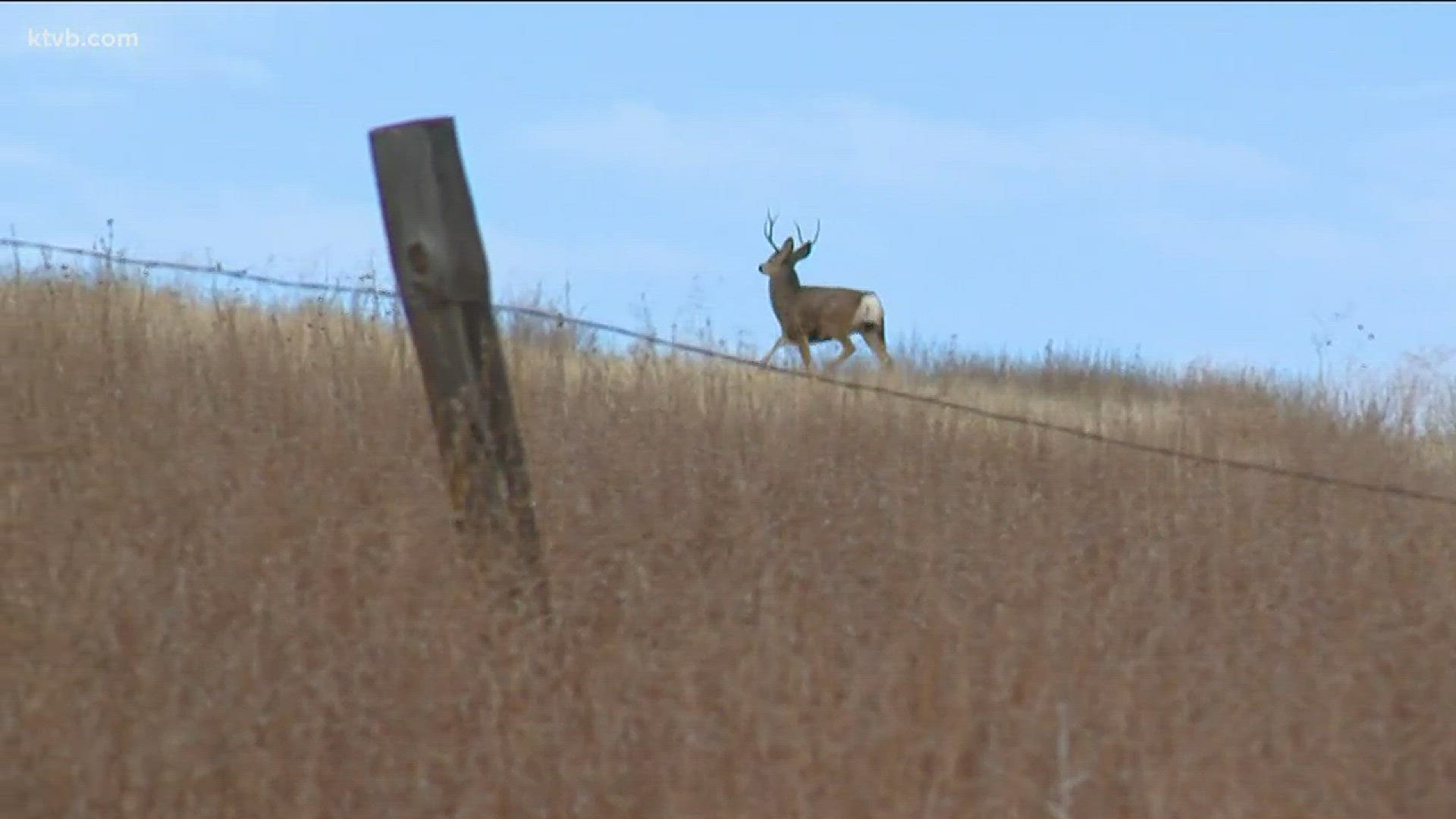It’s rare here in Idaho, but can happen: coming face-to-face with a mountain lion or even a wolf. However, it’s something Idaho Fish and Game says people need to be aware with winter on the horizon.
“We're seeing deer moving down. We're seeing elk moving down, winter is kinda starting up and just like an 18-year-old kid, they're going to follow the food,” Jim Hayden, a biologist with Idaho Fish and Game says.
One of those predators following their food into the foothills are wolves. Earlier this week, the Department of Agriculture’s Wildlife Services says an investigator with their agency found the tracks of a pack of wolves next to the carcass of a cow. The investigator however could not confirm if the pack killed the cow.
The livestock was found near Ourada Ranch Road, which is just a few miles north of the Hidden Springs subdivision.
Hayden says however a wolf can easily travel up to 20 miles a day and has a territory that can range up to 250 square miles.
“Encounters with wolves directly are not very common,” Hayden said.
Suzanne Stone with Defenders of Wildlife says wolves are very elusive and tend to avoid people.
Wolves were reintroduced into Idaho in 1995. They were on the federal Endangered Species List until 2009 and the state of Idaho has been in continuous charge of wolf management here since 2011.
“We're now experiencing less than half the number of livestock depredations than we did prior to state management,” Hayden said.
No one has ever been attacked by a wolf in Idaho and are very rare to encounter, but they have given problems to both livestock and pets over the last two decades. So if you do happen to run across any type of predator, from a mountain lion to wolf, “Basically what you want to do is you want to be aggressive yourself, you want to stand up tall, be upright, make lots of noise. You want to move from the area,” Hayden said.
If you have a dog, keep it close, try to keep it quiet, and remove yourself from the situation.
“You’re talking about another dog species that they view as a competitor. So with their territoriality, the ears go up,” Hayden said. “Even though we live in the city here. We do need to be aware of wildlife.”
Stone says wolves are no more dangerous than any of the other wildlife we find in the foothills, such as bears, mountain lions, and moose.
As people continue to move into the urban interface, the chance of seeing wildlife is increasing.
“We’re going to see more and more interactions between wildlife and humans as time goes on and I think planning is an important part of that as planning how we're going to deal with that situation and how we're going to react to those situations,” Hayden said.

